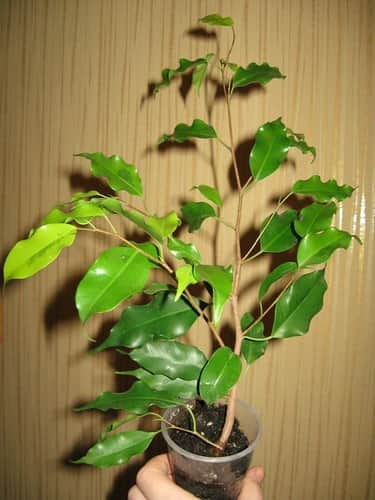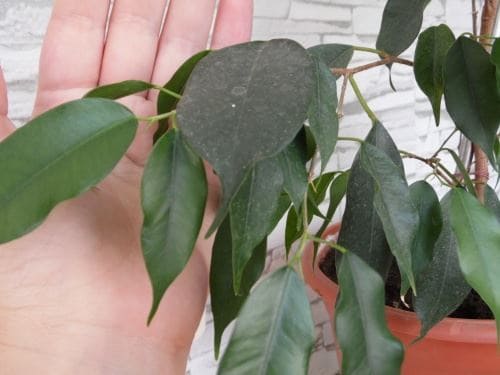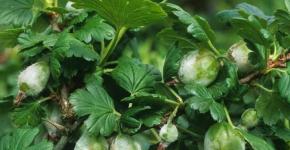Ficus Natasha: growing and care
Ficuses - once very popular, but then unjustifiably forgotten, now they return to the apartments of the inhabitants as house plants. Twenty-five varieties of these gorgeous flowers are suitable for indoor cultivation. Among them is the ficus Natasha - a dwarf species of Benjamin's ficus. A magnificent dwarf tree with a crown like a small bush, with leaves like oval feathers, glossy and bright green. In ancient times, he was highly valued, as they believed that he preserves peace in the house, brings prosperity and prosperity.
Correct care
Ficus NatashaFicus Natasha is a flower that loves warmth and care. In winter, the temperature should not be lower than +10 C. Such a ficus loves bright sunlight, but it also tolerates partial shade at home. Avoid direct sunlight. Ficuses are very demanding on air humidity; it is not recommended to place it near batteries and dry heat sources. In summer, this tree can be put on the balcony, but you need to remember that it is afraid of cold drafts. When watering, it should not be poured, as it does not tolerate stagnant moist soil and can get sick. Watering should be guided by the top layer of soil in the pot. It responds well to bathing in the shower and spraying, as it loves humid air very much. In the summer, it grows quite quickly and does not require a special type of feeding. It is better to replant once a year in the spring. Ficus is easily propagated by cuttings or air layers.
Off-topic question ... Question about summer cottagesWe are constantly receiving letters in which amateur gardeners are worried that due to the cold summer this year there is a poor harvest of potatoes, tomatoes, cucumbers, and other vegetables. Last year we published TIPS on this matter. But unfortunately, many did not listen, but some still applied. Here is a report from our reader, we want to advise plant growth biostimulants that will help increase the yield up to 50-70%.
We advise you to prepare in advance for the summer season, pay attention to this biological product. There are a lot of positive responses.Read ...

What problems can you face when breeding
This type of domestic plants is resistant to various kinds of diseases, but it can get sick. If a certain temperature regime is not observed in the room where the ficus is located, then it can be struck by a spider mite or shield aphid. Ficus can start shedding leaves if there is stagnation of water in the pot, or it is in a draft. The reason for the loss of leaves can also be too dry air in the apartment or improper care. At home, the plant may have shriveled and dry leaves, this is due to insufficient watering and dry air in the room. Ficus has not only decorative, but also useful properties, as it perfectly cleans the air in the room thanks to the benzoin resin in it, and improves the microclimate.
Basic rules for keeping a house tree: useful tips from a florist
In addition, caring for this flower at home is a little scrupulous, since it does not tolerate frequent rearrangements from place to place. Therefore, he needs to determine one place where direct rays of the sun and cold drafts will not fall on him. Ficus can easily tolerate partial shade, so it will feel comfortable and at a sufficient distance from the window.
This plant has a lush and dense crown, so it needs to be stirred periodically, since air must pass to each leaf. Spraying is desirable twice a day with warm water.

When buying a ficus in a store, the first two or three weeks he needs special care. During this period of adaptation of the trunk, he may begin to shed leaves, but do not be afraid of this, just spray more often and water abundantly, but do not flood the plant. After passing this period, it must be transplanted into a new soil, where the formation of the root system will take place.
Reproduction
It is best to propagate it from early spring to mid-summer. It is during this period of time that the root system is well formed on the cuttings.
In order to propagate it by cuttings, you need to remember:
- The stalk should be with a stiff trunk.
- It should have no more than two leaves or buds.
- We rinse the slice well from the milky juice.
- We often change the water in which the cutting stands.
After root formation begins on your cuttings, they can be transplanted into the ground. The main thing is not to forget to water and often spray the young plant, then it will grow well.
Ficus at home can be propagated by air layers. Requirements for harvesting material for planting are the same as for grafting. But, after washing the layer from the milky juice, the cut should be allowed to lie down and dry for a while. Then we plant the layering in a pot with pre-prepared washed river sand. To maintain a favorable microclimate for rooting, you need to provide proper care and cover the plant with a glass jar. As soon as new leaves begin to form on your new plant, rooting has gone well and the jar can be removed.
Care, for the formation of young plants is not required, it is common, and as you can see, not very difficult.
How to form a crown
To form the crown of Natasha ficus, young shoots must either be cut off or pinched. Pruning begins when the main trunk of the plant is already well formed.

It is better to prune during the period of rapid growth of the plant, since it is then that the plant will more easily tolerate this procedure. The pinching of the shoots from the trunk begins after reaching their twelve centimeters. The shoots are pinched on the upper two leaves, which allows you to find the desired bushiness and formation.
And a little about the secrets of the Author
Have you ever experienced unbearable joint pain? And you know firsthand what it is:
- inability to move easily and comfortably;
- discomfort when going up and down stairs;
- unpleasant crunching, clicking not on their own;
- pain during or after exercise;
- joint inflammation and swelling;
- unreasonable and sometimes unbearable aching pain in the joints ...
Now answer the question: does this suit you? How can you endure such pain? And how much money have you already "poured" on ineffective treatment? That's right - it's time to end it! Do you agree? That is why we decided to publish an exclusive interview with Oleg Gazmanov, in which he revealed the secrets of getting rid of joint pain, arthritis and arthrosis.
Attention, only TODAY!


